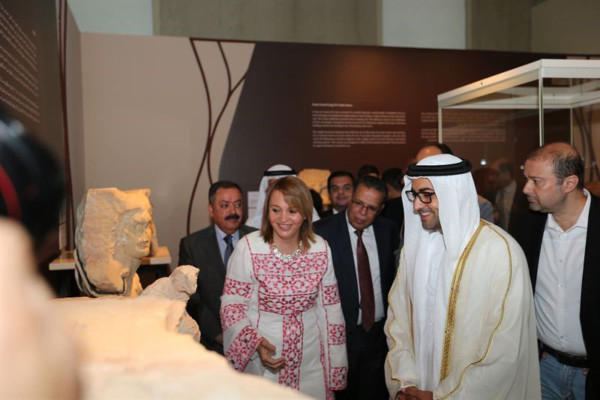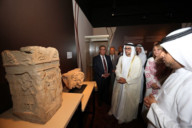
Sharjah: A rich collection of artefacts recovered from the ‘Lost City’ of Petra in Jordan are on display now at the Sharjah Archaeology Museum, it was announced on Wednesday.
The exhibition, a collaboration between Sharjah Museums Department and the Department of Antiquities in Jordan, is the first show of its kind in the Gulf and is considered integral in promoting cross-cultural exchange between Arab societies.
A spectacular collection of sculptures, statues, architectural remnants and much more, all originating from the ancient city of Petra, will be on display at the Petra, Desert Wonder exhibition, which runs from November 23, 2016, to March 16, 2017.
The museum offers visitors a unique insight into the groundbreaking artistic and architectural heritage of the civilisation of the Arab Nabataeans and their ‘Rose City’, organisers said.
Visitors will explore the relationship and connections that linked Petra as a centre of trade with other settlements in the Arabian Peninsula, including Sharjah’s most significant archaeological site, Maliha.
Manal Ataya, Director General of Sharjah Museums Department, said visitors will also gain an understanding into one of the most important civilisations in the region and the groundbreaking artistic and architectural heritage integral to their capital.
“Sharjah Museums Department plays a vital role as a vehicle for the promotion of cross-cultural exchange. Exhibiting such a wealth of pieces in this region for the first time helps to greatly expand knowledge of this great city, which in turn preserves the cultural heritage of a major Arab civilisation,” she said.
She added that Petra, Desert Wonder presents a unique collection of rare archaeological finds from the Nabataean city of Petra, which is hidden among steep red rocks of sandstone in the southern part of Jordan.
From 300 BC to 106 AD, Petra was the capital of a wealthy and powerful kingdom, as well as a political and economic metropolis.
The artefacts chosen for the exhibition highlight that the history and culture of the Nabataean kingdom was linked with Maliha in Sharjah via established trade routes. With its strategic location, the Petra dominated trade links affiliated with the passage of caravans transporting incense, frankincense and spices. Today, the city stands out as the only Arab archaeological site among the ‘new wonders of the world’, recognised internationally as Unesco World Heritage in 1985.
The exhibition showcases examples of Nabataean achievements in the fields of industry, engineering and art.









